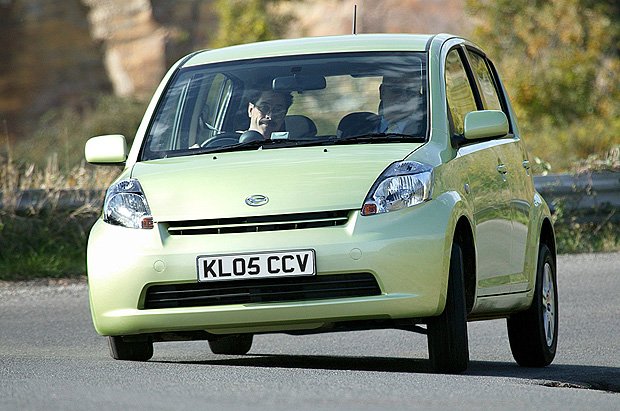
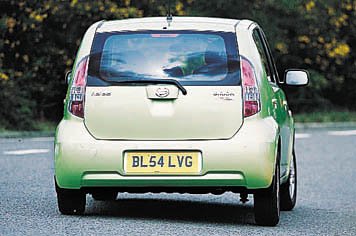
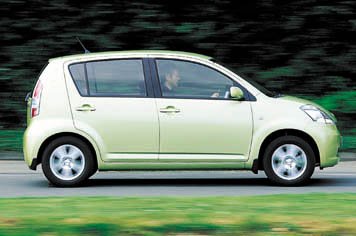
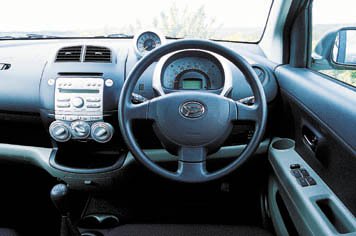
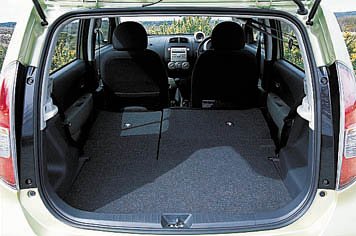
By placing Sirion below the obvious opposition (Ford Fiestas, Volkswagen and Skoda Fabias Polos), not using a high roofline to maintain interior space, Daihatsu to play to strengths - value for money and interior space. It's a neat idea, and the only problem with that is that the Daihatsu was not the first person who has had it. Into what would have become a rather exclusive niche, the Sirion is now found himself falling into the class car developed by Mitsubishi Colt filled competent, very capable of Fiat Panda, Kia Picanto talented and often underrated Hyundai Getz.
The Sirion is available with two engines and cut rates, from £ 6995 for the three-cylinder 1.0-liter 68bhp S and up to £ 8395 for 86bhp four-cylinder 1.3-liter SE. Automatic gearbox is only available on the second and £ 795 extra cost, but the stick-shift version has bright lights shining in our typical, almost funny faces.
Style at home in Daihatsu, Sirion design classes and current best practice with devotion that was almost like a slave. There is a high roof line needed to accommodate the upright seating position and, therefore, free up space for the legs, the abbreviated tail and short overhangs and little touches like the pumped-up designing some sense of style wheelarches in the car. Mostly, it works.
Mechanical model of the car seems very small convention, with a twin-cam 1.3-liter four-cylinder engine, five-speed manual gearbox and front wheel. Suspension is by struts in front and a torsion beam rear axle.
But there are several interests here: the engine has variable valve timing and, Daihatsu claims, features the world's first self-regenerating catalyst. Instead of letting the palladium particles degrade over time, reduce the effectiveness of the catalyst and improve the engine emissions, nanotechnology has enabled these particles pass into and out of the crystalline state, extending the natural life of the catalyst.
The Sirion is available with two engines and cut rates, from £ 6995 for the three-cylinder 1.0-liter 68bhp S and up to £ 8395 for 86bhp four-cylinder 1.3-liter SE. Automatic gearbox is only available on the second and £ 795 extra cost, but the stick-shift version has bright lights shining in our typical, almost funny faces.
Style at home in Daihatsu, Sirion design classes and current best practice with devotion that was almost like a slave. There is a high roof line needed to accommodate the upright seating position and, therefore, free up space for the legs, the abbreviated tail and short overhangs and little touches like the pumped-up designing some sense of style wheelarches in the car. Mostly, it works.
Mechanical model of the car seems very small convention, with a twin-cam 1.3-liter four-cylinder engine, five-speed manual gearbox and front wheel. Suspension is by struts in front and a torsion beam rear axle.
But there are several interests here: the engine has variable valve timing and, Daihatsu claims, features the world's first self-regenerating catalyst. Instead of letting the palladium particles degrade over time, reduce the effectiveness of the catalyst and improve the engine emissions, nanotechnology has enabled these particles pass into and out of the crystalline state, extending the natural life of the catalyst.
No comments:
Post a Comment